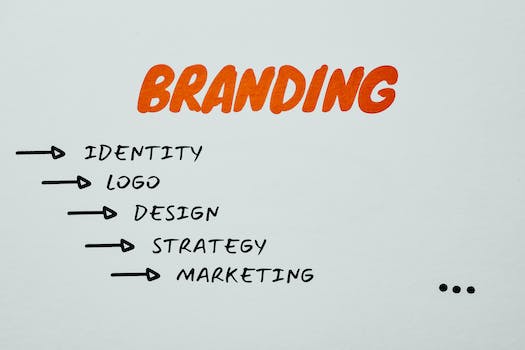How can storytelling be used to improve my brand?
Storytelling can be used to create a connection between your brand and your customers. By telling a story, you can help your customers understand your brand’s values and mission, and you can also create a more memorable and emotional connection with them. Storytelling can also be used to build trust and credibility, and to position your brand as a leader in your industry.
Here are some specific ways that storytelling can be used to improve your brand:
* **Create a memorable brand experience.** When you tell a story, you’re creating a memorable experience for your customers. This can help them to remember your brand and to associate it with positive feelings.
* **Build trust and credibility.** When you tell a story, you’re showing your customers that you’re a real person or company with a story to tell. This can help them to trust you and to believe in your brand.
* **Position yourself as a leader.** When you tell a story, you’re showing your customers that you’re an expert in your field. This can help you to position yourself as a leader in your industry and to attract new customers.
What is storytelling in branding?
Storytelling in branding is the art of using stories to communicate a brand’s values, mission, and vision. By telling a story, a brand can create a connection with its customers and build trust and credibility. Storytelling can also be used to position a brand as a leader in its industry and to attract new customers.
Here are some examples of how storytelling can be used in branding:
* **Nike tells the story of its founder, Phil Knight, and how he started the company with just $50 in his pocket. This story communicates Nike’s values of innovation and determination.**
* **Starbucks tells the story of its founder, Howard Schultz, and how he transformed the company from a small coffee shop into a global brand. This story communicates Starbucks’ values of community and connection.**
* **TOMS tells the story of its founder, Blake Mycoskie, and how he started the company with the goal of giving a pair of shoes to a child in need for every pair sold. This story communicates TOMS’ values of giving back and making a difference in the world.**
Storytelling is a powerful tool that can be used to create a connection with your customers, build trust and credibility, and position your brand as a leader in your industry. If you’re looking for ways to improve your brand, storytelling is a technique that you should consider using.
What is storytelling in branding?
Storytelling in branding is the art of using stories to communicate a brand’s values, mission, and vision. By telling a story, a brand can create a connection with its customers and build trust and credibility. Storytelling can also be used to position a brand as a leader in its industry and to attract new customers.
The benefits of storytelling in branding
Storytelling can provide a number of benefits for brands, including:
- Creating a memorable brand experience
- Building trust and credibility
- Positioning yourself as a leader
- Engaging customers
- Inspiring customers
- Driving sales
By telling a story, you can create a connection with your customers and build a relationship that will last long after the sale is made.
How to create a story for your brand
To create a story for your brand, you need to start by identifying your brand’s values and mission. What do you stand for? What do you want to achieve? Once you know your brand’s values and mission, you can start to develop a story that reflects them.
Your story should be engaging, memorable, and relevant to your target audience. It should also be consistent with your brand’s values and mission.
Here are some tips for creating a story for your brand:
- Start with a strong hook.
- Develop your characters and plot.
- Create a conflict and resolution.
- Make sure your story is relevant to your target audience.
- Keep your story consistent with your brand’s values and mission.
If you’re not sure how to create a story for your brand, you can hire a professional writer to help you.
Examples of storytelling in branding
Here are some examples of brands that have used storytelling to their advantage:
- Nike: Nike’s “Just Do It” campaign is a classic example of storytelling in branding. The campaign tells the story of how anyone can achieve their goals, no matter how big or small.
- Coca-Cola: Coca-Cola’s “Share a Coke” campaign is another great example of storytelling in branding. The campaign tells the story of how Coca-Cola brings people together.
- Apple: Apple’s “Think Different” campaign is a powerful example of storytelling in branding. The campaign tells the story of how Apple is a company that encourages people to think differently and to challenge the status quo.
These are just a few examples of how brands have used storytelling to their advantage. By telling a story, brands can create a connection with their customers, build trust and credibility, and position themselves as leaders in their industry.
Tips for using storytelling in your marketing
Here are some tips for using storytelling in your marketing:
- **Start with a strong story.** Your story should be engaging, relatable, and memorable. It should also be relevant to your target audience.
- **Tell your story in a clear and concise way.** Your story should be easy to understand and follow. It should also be visually appealing, so that it can be easily shared on social media.
- **Use storytelling to connect with your audience.** Your story should help your audience to understand your brand’s values and mission. It should also create a emotional connection with them.
- **Use storytelling to build trust and credibility.** When you tell a story, you’re showing your audience that you’re a real person or company with a story to tell. This can help them to trust you and to believe in your brand.
- **Use storytelling to position yourself as a leader.** When you tell a story, you’re showing your audience that you’re an expert in your field. This can help you to position yourself as a leader in your industry and to attract new customers.
Common mistakes to avoid when using storytelling in branding
Common mistakes to avoid when using storytelling in branding
When used effectively, storytelling can be a powerful tool for branding. However, there are also some common mistakes that brands can make when using storytelling. Here are a few things to avoid:
* **Telling a story that doesn’t connect with your brand.** Your story should be relevant to your brand and its values. If it doesn’t connect with your brand, it will be difficult for your customers to relate to it and see the value in it.
* **Telling a story that is too long or too short.** Your story should be the right length for your audience. If it’s too long, your customers will lose interest. If it’s too short, they won’t have time to connect with the characters or the plot.
* **Telling a story that is too complex or too simple.** Your story should be easy for your customers to understand. If it’s too complex, they won’t be able to follow it. If it’s too simple, they won’t be engaged.
* **Telling a story that is unrealistic or unbelievable.** Your story should be believable and relatable. If it’s unrealistic, your customers won’t be able to connect with it.
* **Telling a story that is self-promotional.** Your story should focus on your customers, not on your brand. If it’s too self-promotional, your customers will be turned off.
By avoiding these common mistakes, you can use storytelling to effectively improve your brand.
Conclusion
In conclusion, storytelling is a powerful tool that can be used to improve your brand. By telling a story, you can create a connection with your customers, build trust and credibility, and position yourself as a leader in your industry. If you’re looking for ways to improve your brand, storytelling is a great option to consider.
Here are some tips for using storytelling in your marketing:
- Make sure your story is relevant to your target audience.
- Keep your story short and sweet.
- Use vivid language and imagery to engage your audience.
- Tell your story in a way that is authentic and genuine.
If you follow these tips, you can use storytelling to create a memorable and engaging brand experience for your customers.
If you’re ready to start using storytelling to improve your brand, download our free guide to storytelling in marketing.




